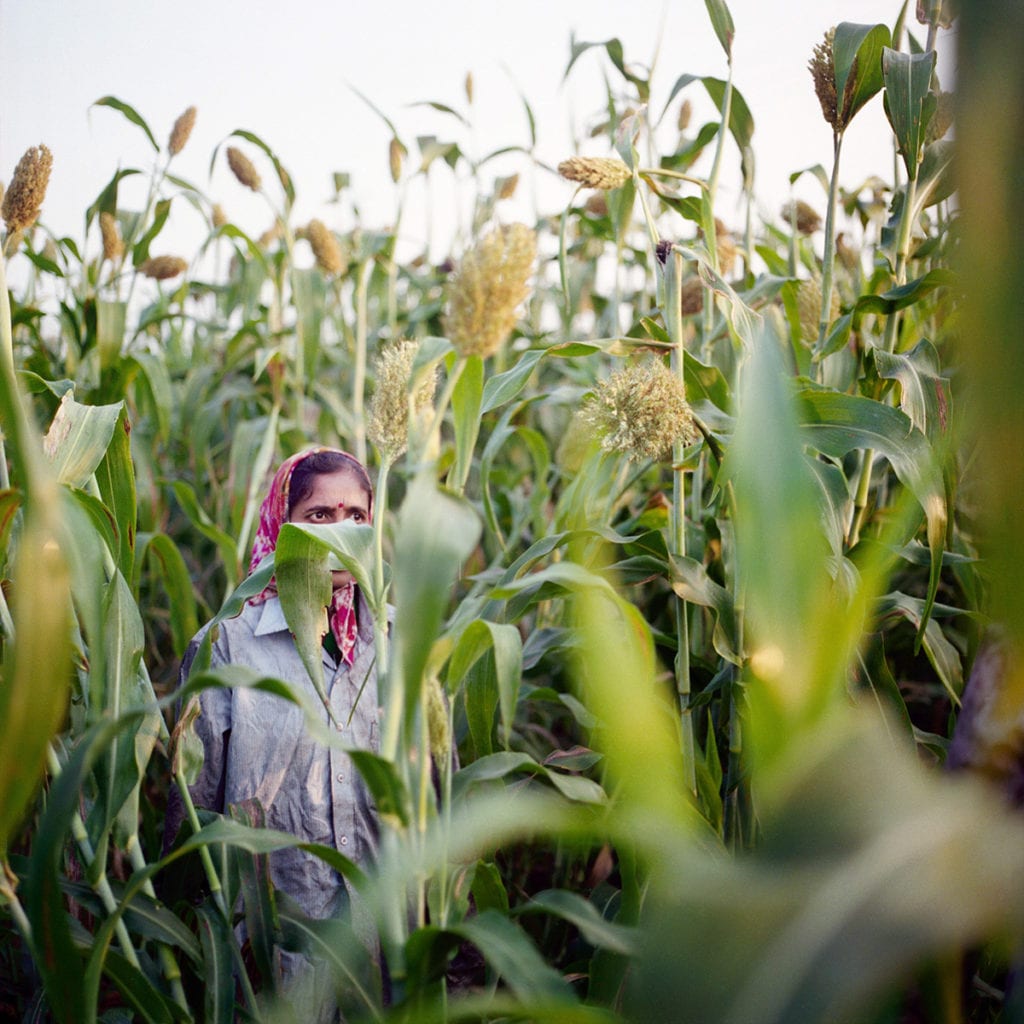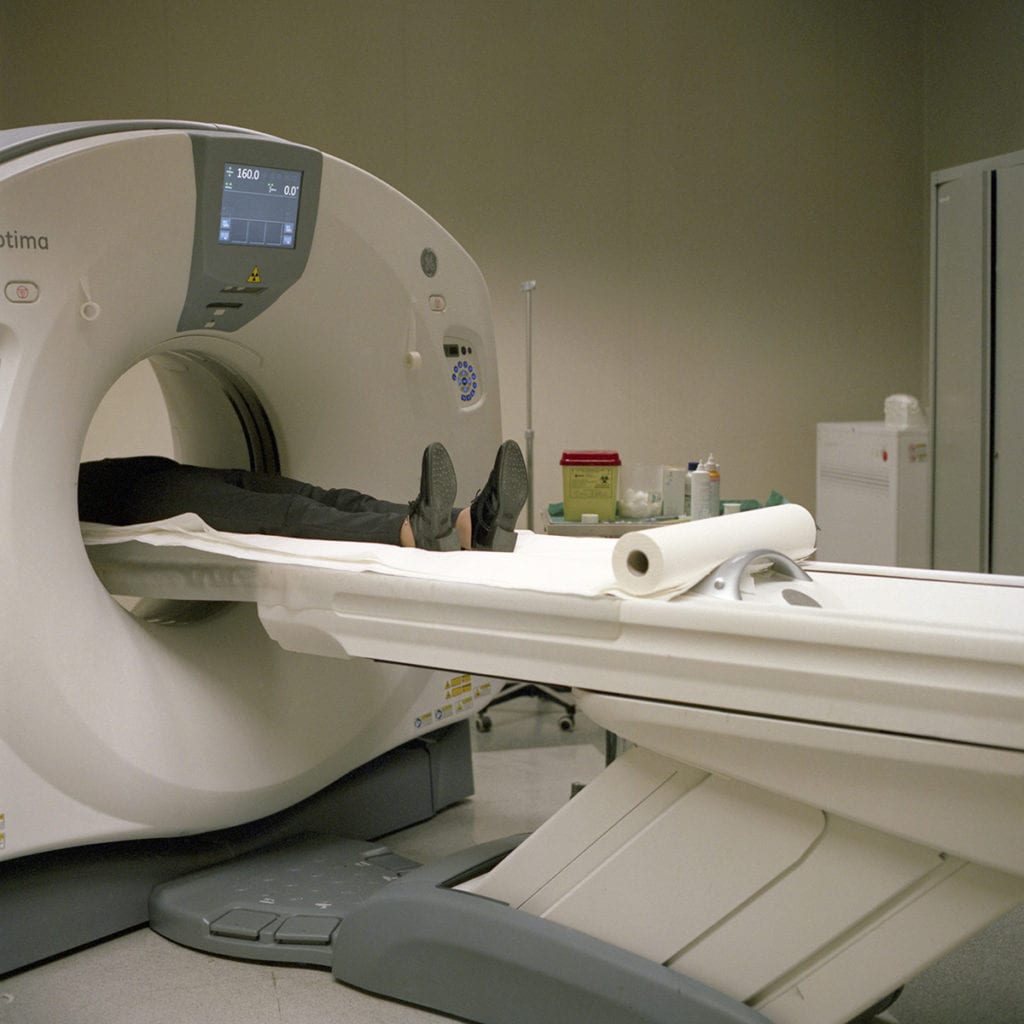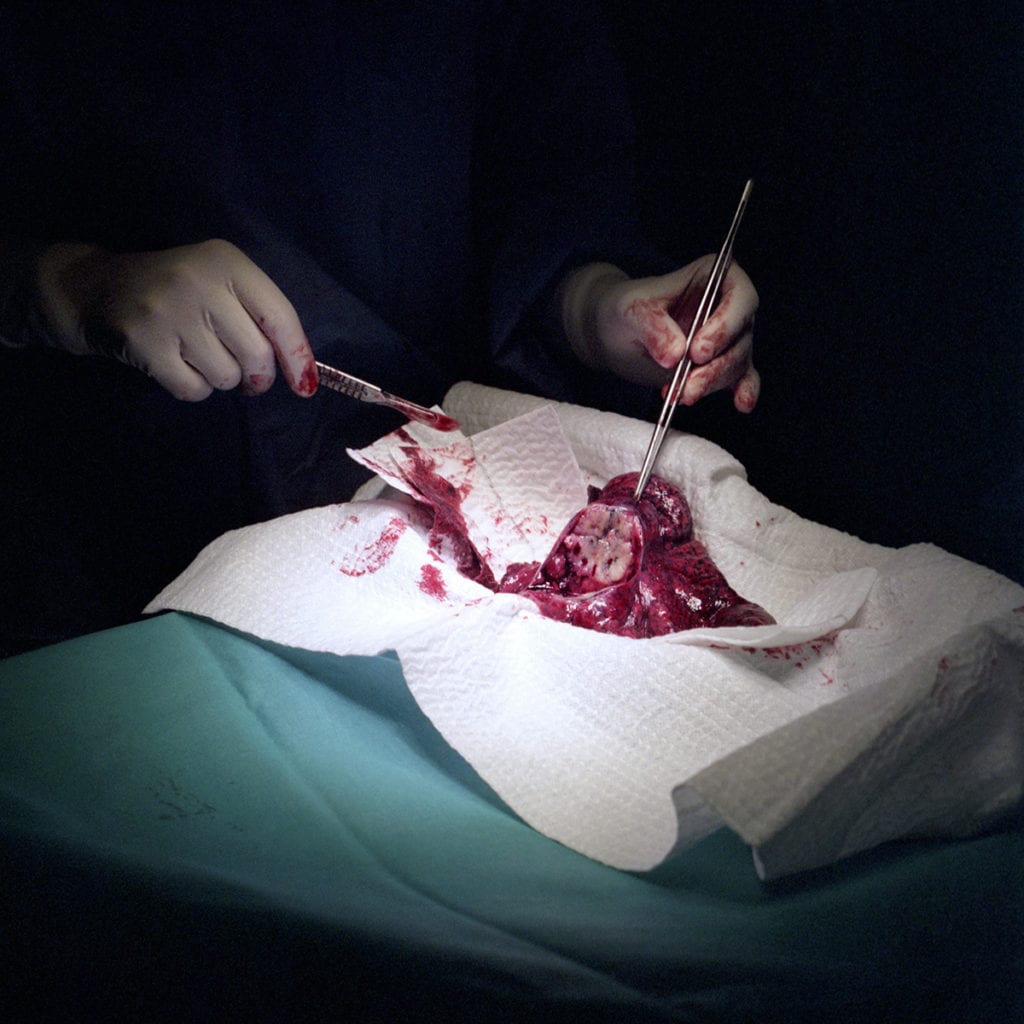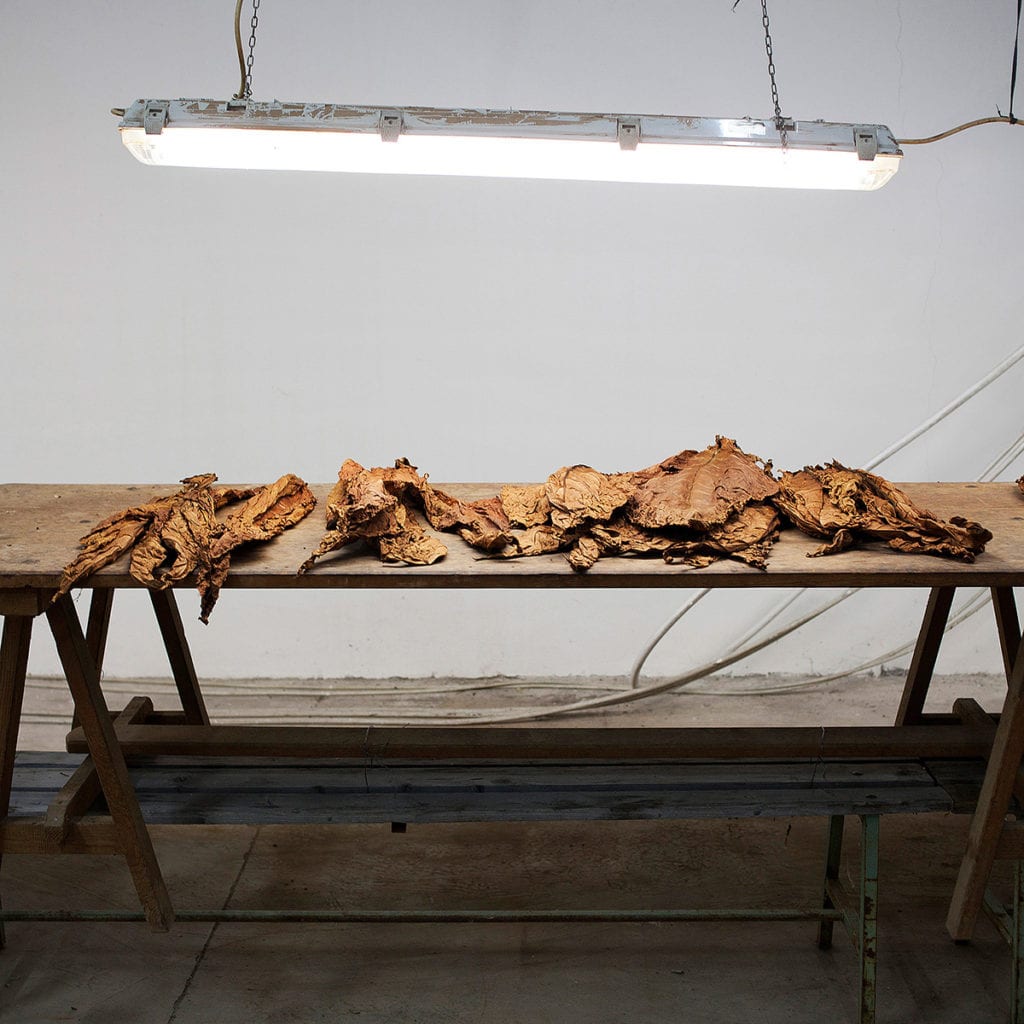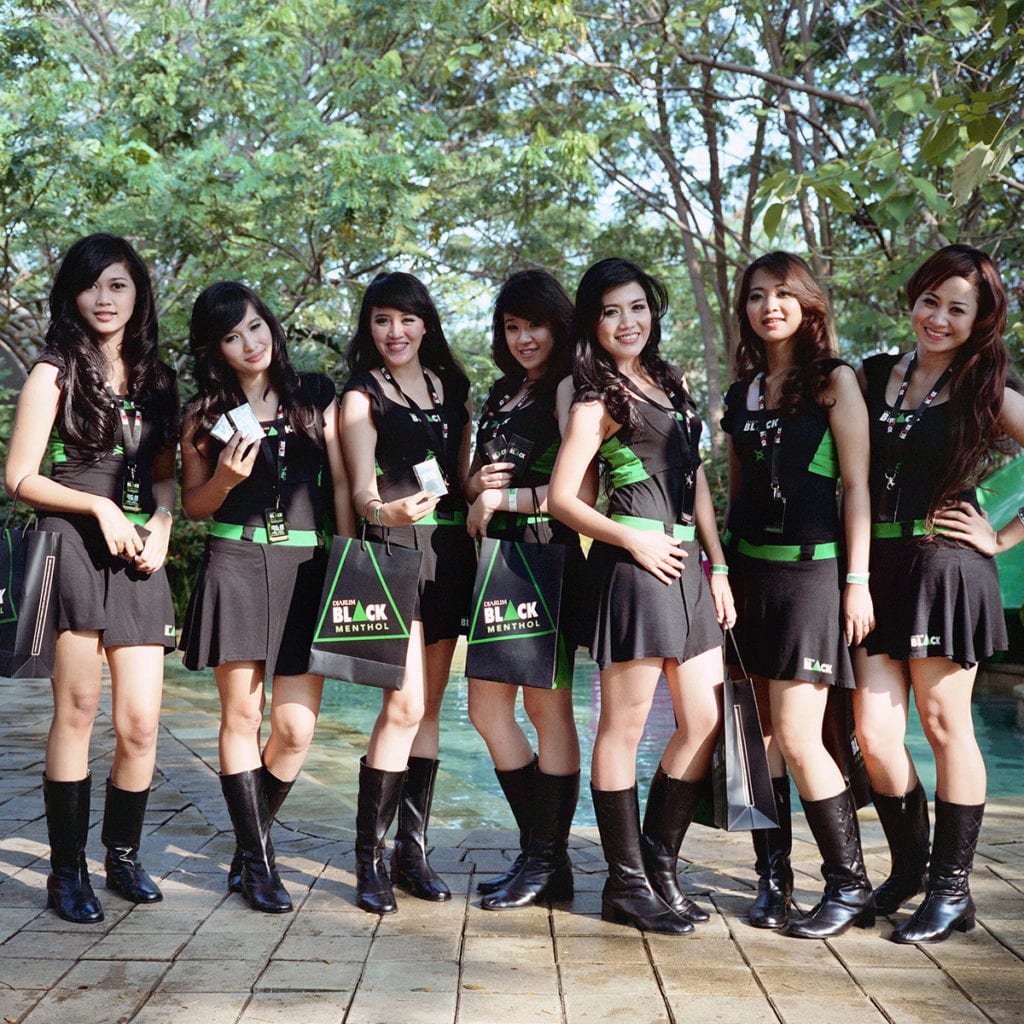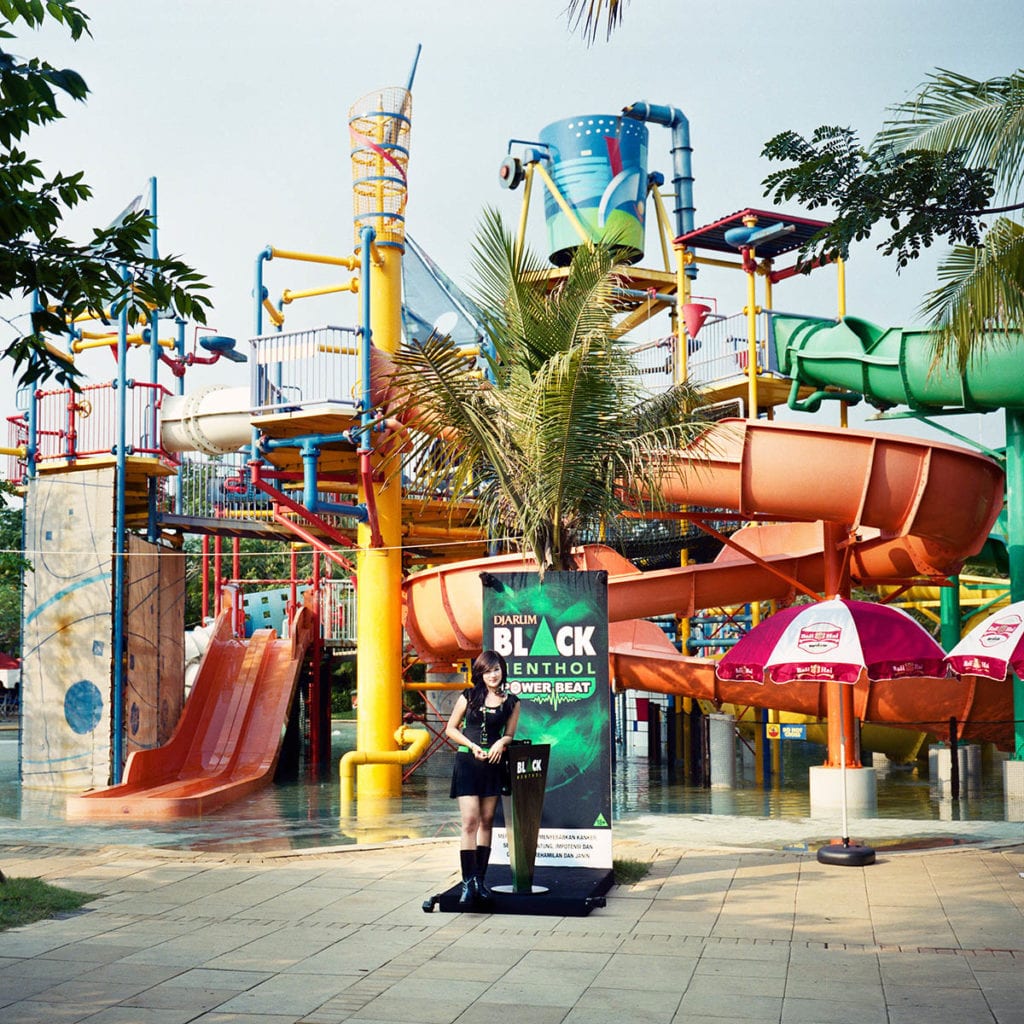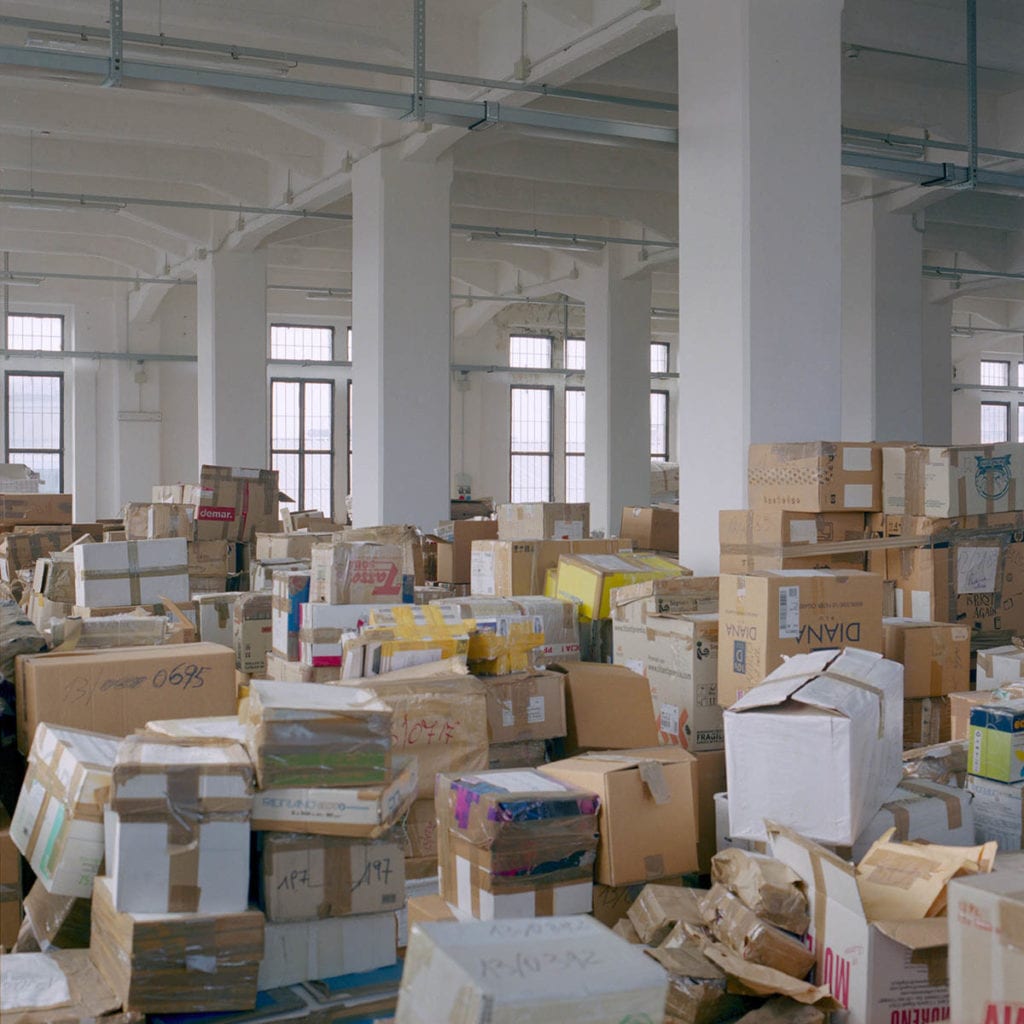Cigarettes are considered the most marketed consumer product in history. And yet, beyond the normalised images of tobacco – the glamorous Hollywood starlet yielding a cigarette holder, or the health warnings that coat cigarette packets – little is shown of its production. Rocco Rorandelli’s project Bitter Leaves goes behind the scenes, tracing the tobacco industry from provinces in China, where its leaves are farmed, to the ‘cigarette girls’ selling the product at parties and theme parks.
The project, which comprises a photo story and research into the devastation caused at every stage of production, is now being published by GOST Books. Among the images are a photograph of a patient seated in a greying hospital room, juxtaposed with a portrait of a malnourished child seated on a bale of drying tobacco leaves, sacks of them stretching out into the warehouse behind him.
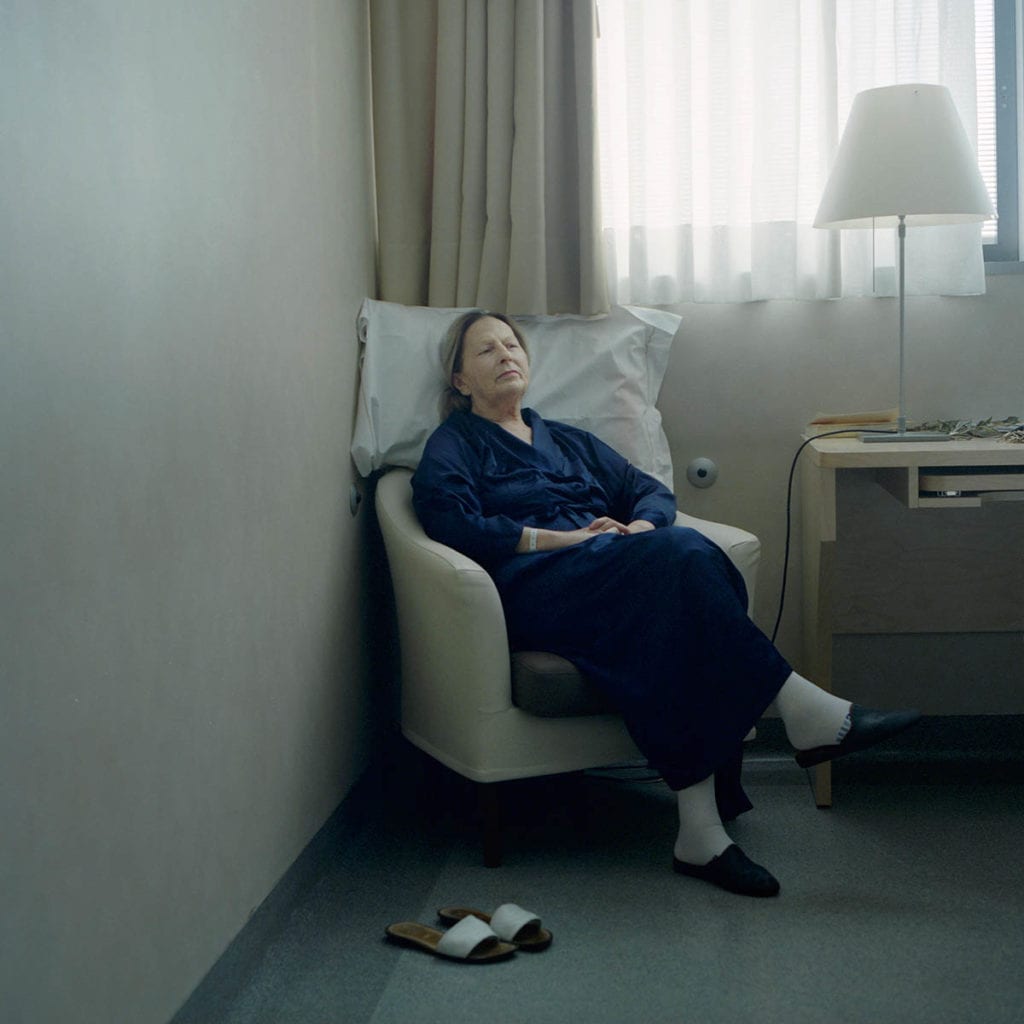
“I wanted to understand what was hiding behind the cigarette,” says Rorandelli. “Most anti-smoking campaigns are based on the detrimental effects that smoking has on its users. If we are to become more critical as consumers, we must think not only that something can hurt us, but also about the impact along its entire chain.” The death of his father from a smoking related disease prompted Rorandelli to spend the last 10 years uncovering the impacts.
Bitter Leaves has taken the photographer around the world – from Italy, China and Nigeria, to Slovenia and the US – giving him a global perspective on how the product is made. “Tobacco uses a greater combination of fertilizers and pesticides than food crops,” he explains. “While the success of the cigarette derives from their apparent simplicity – tobacco leaves, paper and filter – their design hides not only the chemical toxicity of smoke, but also the many socio-economic and environmentally negative aspects linked to their production, marketing and utilisation.”
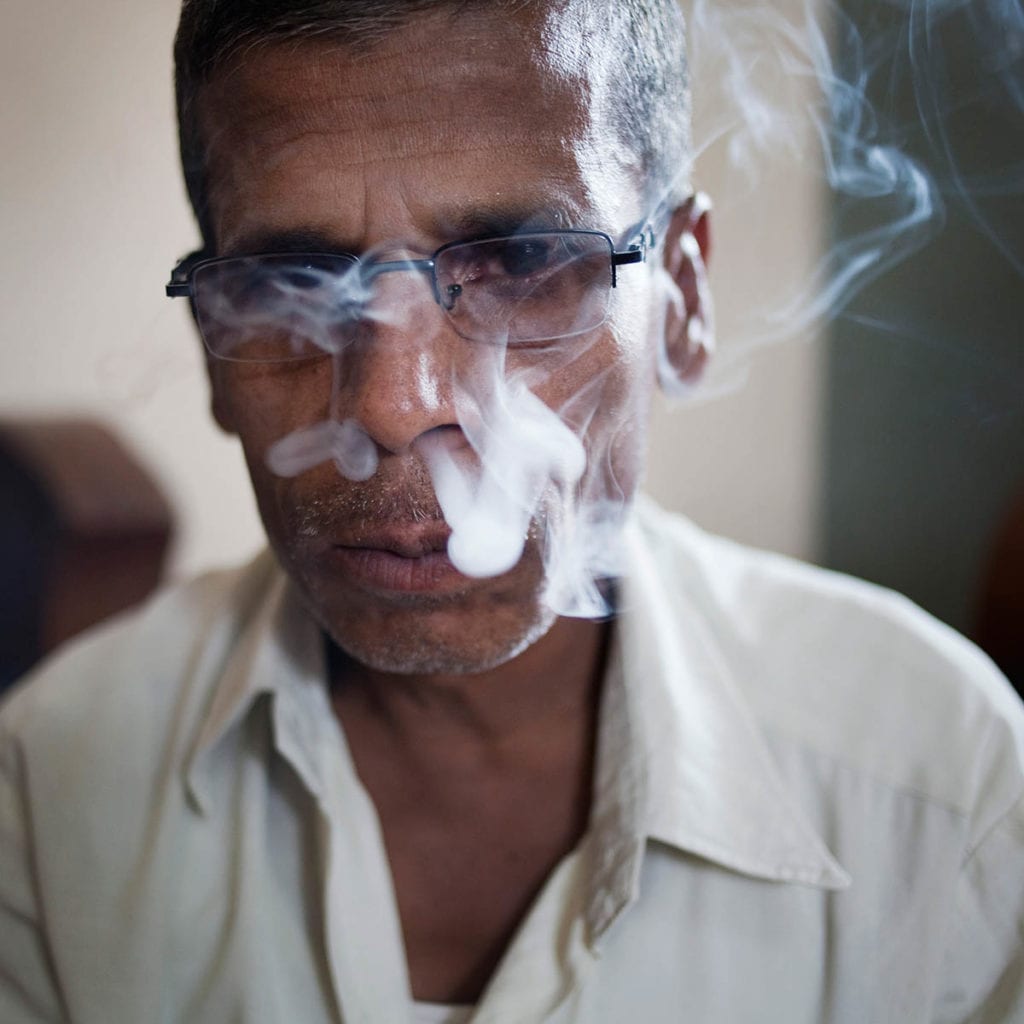
Has there been any progression in the industry in the decade since Rorandelli began his project? “Some of the big tobacco companies have started NGOs,” he says. These NGOs, according to Rordandelli, are usually related to the exploitation of child labour and undocumented workers on farms, but the photographer is sceptical about the changes they are implementing. “It’s interesting that a private enterprise has chosen to start an NGO in a field that goes against its own industrial philosophy,” he says. For an industry that is often accused of utilising aggressive marketing campaigns to identify new and largely underage customers, there is some hypocrisy in the presentation of its own progression.
In the ten years that Rorandeli has been creating his series, the tobacco industry has shown little sign of slowing down, despite frequent health warnings. While the amount of tobacco cultivated in high-income countries is steadily decreasing, cultivation in low and middle-income countries has increased significantly, and new sectors are being targeted.
“The industry is evolving as the markets change,” explains Rorandelli. “Now it’s e-cigarettes, but I also see investment going into legal hashish.” He believes that the change we need to see is in the redistribution of power. Vast profits lie with manufacturers, and not with the world’s tobacco farmers. “The apparent simplicity of cigarettes in reality hides a complex network of actors,” he explains. “They are scattered all over the world, and their work is rarely acknowledged.”
www.terraproject.net/photographers/rocco-rorandelli
Bitter Leaves is raising money for publication by GOST Books. You can contribute to the Kickstarter campaign here.
